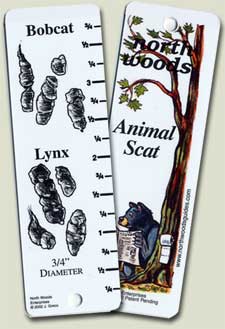

The use of non-invasive genetic sampling (NGS) has become increasingly popular in wildlife research but needs well-planned sampling strategies and reliable laboratory protocols. We suggest that scat-based studies should implement measures (molecular or others) that allow researchers to determine their own circumstance-specific error rates in scat identification, which should be incorporated in subsequent analyses, ensuring reliable ecological inferences.

Our results suggest that scat identification accuracy rates are circumstance-specific and therefore should not be transferred or extrapolated. The error rates in scat species assignment constitute a potential source of bias in ecological studies, with serious consequences for the management of threatened species, as unrealistic estimates of status and distribution are prone to occur. However, the low variability explained suggests that unaccounted factors also had significant effects on accuracy rates. The developed models revealed that putative species, season, study area and target species abundance are among the factors involved in identification accuracy. Our results revealed that error rates in species assignment of scats based on morphology were highly variable, ranging from 14%, for putative red fox Vulpes vulpes samples, to 88%, for putative wildcats Felis silvestris. Using molecular methods, we evaluate the accuracy of species identification based on morphological characteristics of mammalian mesocarnivore scats collected in two areas in the Iberian Peninsula. Potential errors in scat identification are rarely accounted for and might contribute to substantial bias of the final results. However, species assignment is commonly based on scat morphology. Research on terrestrial carnivore ecology frequently relies on scat identification and analysis.


 0 kommentar(er)
0 kommentar(er)
